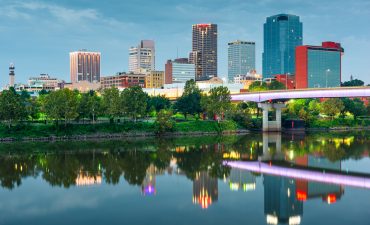Around 12th century, fireworks were invented by China to scare away the evil spirit or devils. Firecrackers mostly have black powder or flash powder with many other metals, which were wrapped in a tight paper tube with a fuse to light the powder.
The black powder or gun powder has charcoal, sulfur and potassium-nitrate. Along with these, the firecrackers have aluminum or other reactive metal with low electro-negativity. This composition induces a chemical reaction when they are lighted. They also burn very brightly. The aluminum used in the firecrackers should be powdered very finely.
When ignited, the gunpowder will burst out of the closed tube or container. The moment the gunpowder burst, all the other metals come out in a shape of sparkles and stars to make the sight even brighter and colorful. Gunpowder technically doesn’t burst. It burns very fast and creates the impression of an explosion. However, when it burns very fast it can produce enough pressure and heat to cause an explosion, but the rate of explosion is normally very low. The rate of explosion can be controlled by the volume of gunpowder and the procedure of confinement.
The composition of firecrackers
Firecrackers normally use elements such as fuel, an oxidizer, and color producing chemicals, a binder and a chlorine donor to make the pyrotechnic stars. The fuel permits the stars to burn; on the other hand, the oxidizer is a compound that gives support to the burning of the fuel. Several metals are used that produce the various hues of colors during an explosion.
The binder is the grip which holds the pallet collectively. The chorine donor helps the chlorine gas to generate a brighter luminescence of the flame. But sometimes the oxidizer can perform this role instead of the Chlorine donor.
The most commonly used metals are Strontium and Lithium (to make the red color), Calcium (to make the orange color), Sodium (to make the yellow color), Barium (to make the green color), Copper halides (to make blue color), Cesium (to make the Indigo color), Potassium and Rubidium (to make the violet), Charcoal and iron or lampblack (to make the Golden color), and last but not least Titanium, Aluminum, Beryllium or Magnesium Powders (to make the White color).
Magnesium is seldom used in the fireworks industries as it is not able to form a protective oxide layer. Instead of Magnesium, an alloy called Magnalium is used in the production of fireworks. Some of the chemicals used in the firework industry are non-toxic while some of the chemicals are highly toxic.
The classifications
Fireworks can produce noise, light, smoke and floating material. They can be designed to burn with colored flames and sparks. The sparks can be extremely colorful, and many compounds are used for emitting colors such as red, orange, yellow, green, blue, purple and even silver. Firecrackers can be classified as ground firecrackers and aerial firecrackers depending on their performance.
The uses of fireworks
The fireworks are mainly used to celebrate any event. In most of the countries, fireworks can be seen on the New Year’s Day or any other special day. It is basically a type of low-explosive pyrotechnic device, which is used for artistic and entertainment purpose.
Fireworks competition is very common in several countries. As China is the inventor of fireworks, it is used for celebrating various festivals in China. They are the largest manufacturer and exporter of firecrackers as well.






